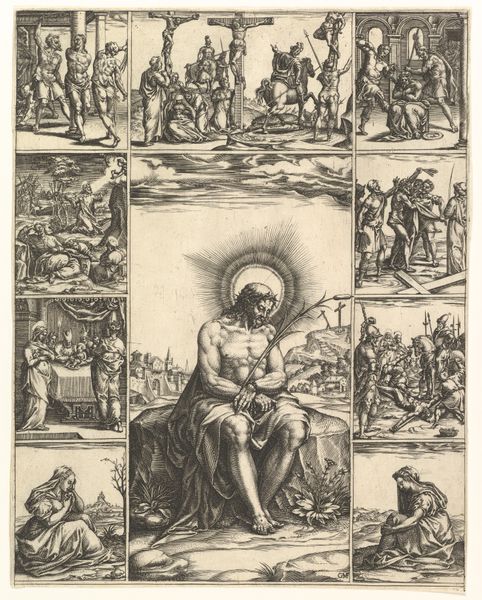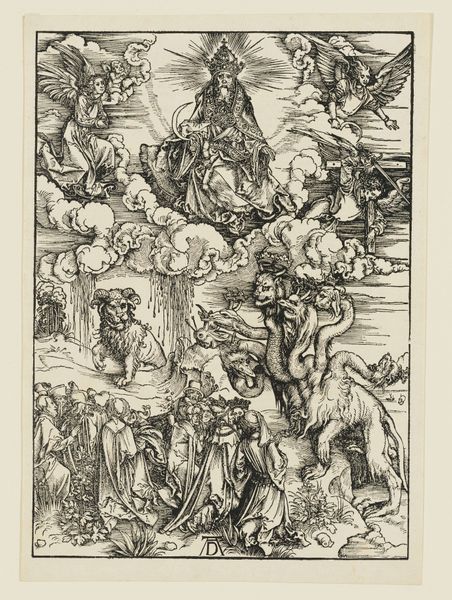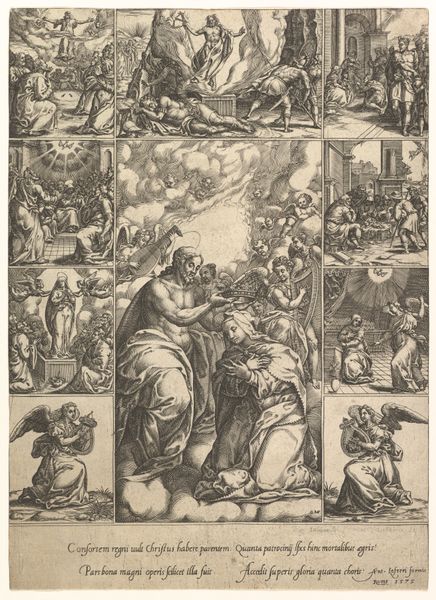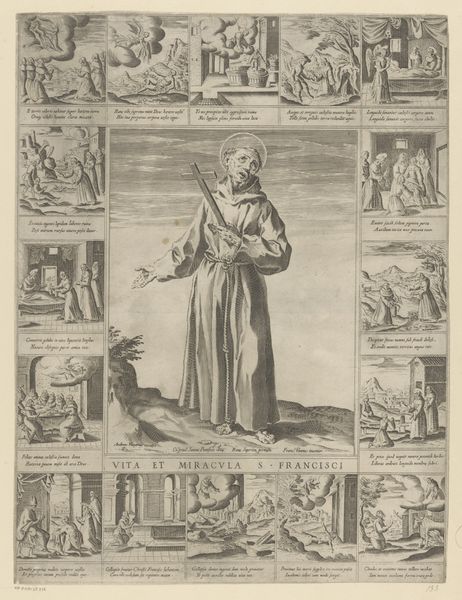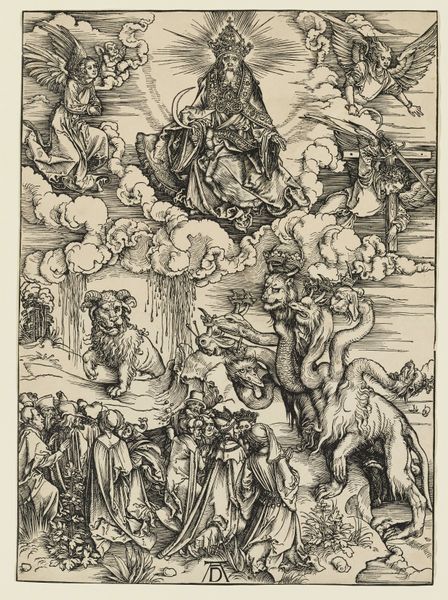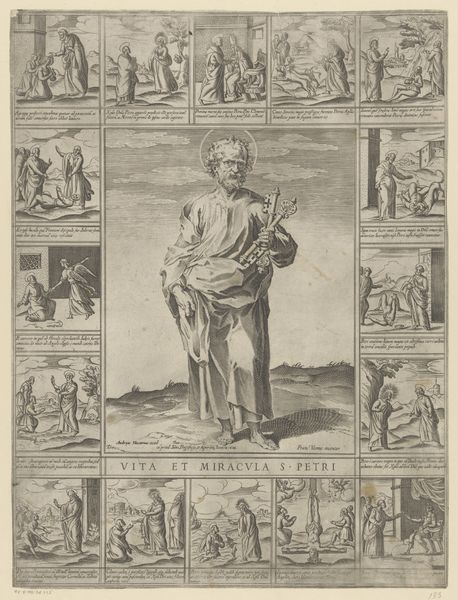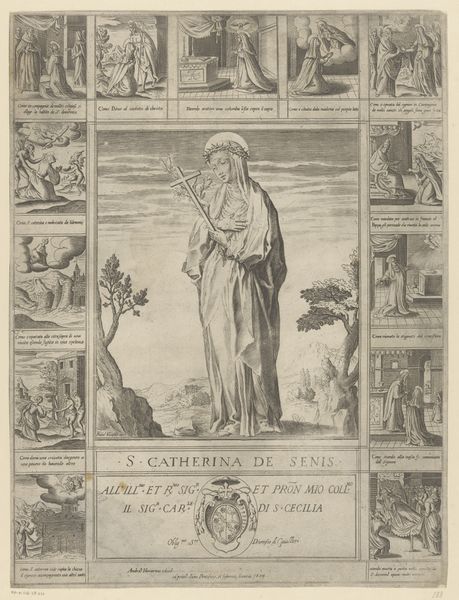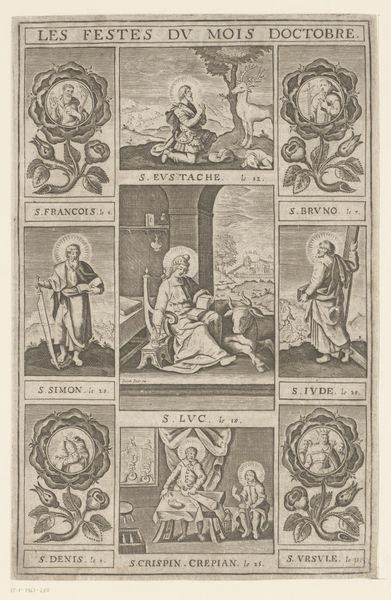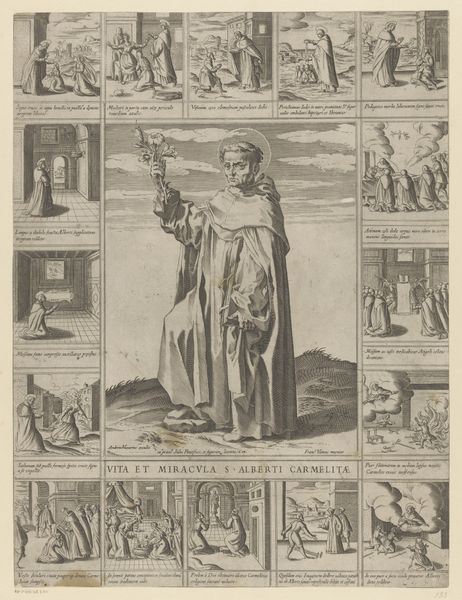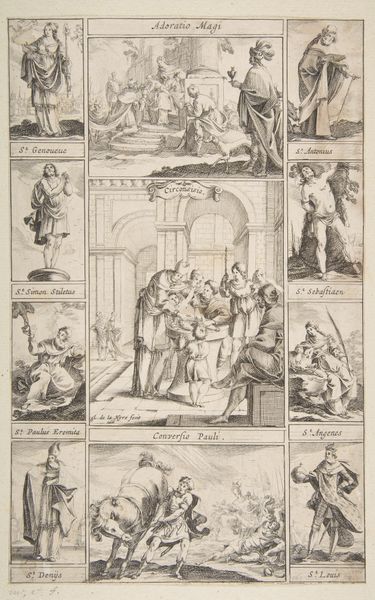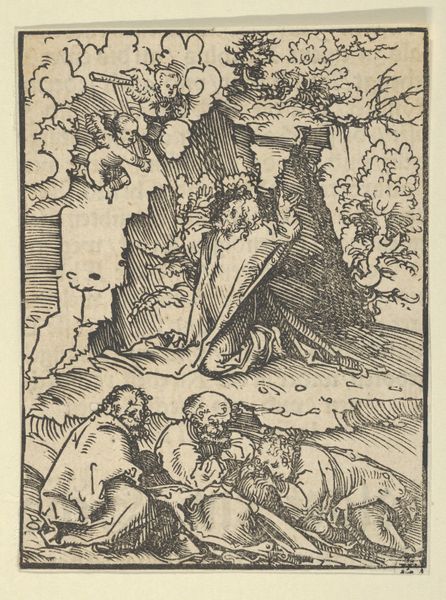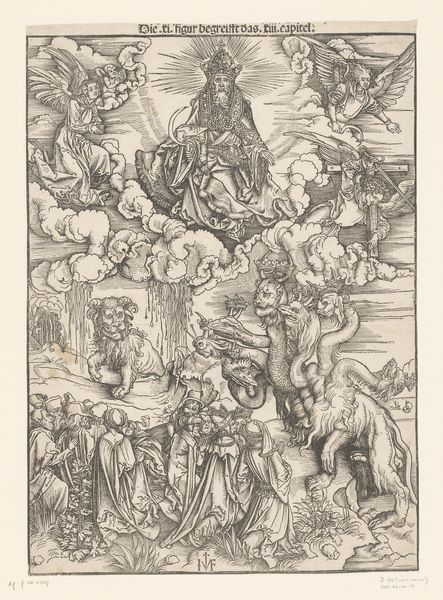
The Virgin of Sorrows; an image of the Virgin Mary surrounded by nine vignettes depicting scenes of her life 1570 - 1580
0:00
0:00
drawing, print, engraving
#
drawing
# print
#
figuration
#
cross
#
history-painting
#
italian-renaissance
#
engraving
#
virgin-mary
#
angel
#
christ
Dimensions: Sheet (Trimmed): 11 3/4 × 8 3/4 in. (29.9 × 22.2 cm)
Copyright: Public Domain
Curator: Giorgio Ghisi, between 1570 and 1580, created "The Virgin of Sorrows; an image of the Virgin Mary surrounded by nine vignettes depicting scenes of her life." It's an engraving, currently residing here at the Met. Editor: Immediately striking! The central figure of Mary is quite imposing, but then your eye darts around, trying to piece together the narrative presented in those bordering vignettes. A real dance of sorrow and reflection. Curator: Indeed, Ghisi situates the Virgin within a culturally specific context of suffering, inviting viewers into a reflection on female pain and piety in Renaissance society. The piece really explores intersectional ideas of religious power and feminine vulnerability. Editor: And consider the act of engraving itself. The labor-intensive process, the careful tooling of the metal plate, highlights the immense amount of work needed to replicate these images. It speaks to the value placed on these narratives. Curator: That connects to its socio-historical relevance, yes. Consider how prints like these allowed religious narratives to be disseminated widely. Who was given access to them, who commissioned them, and how that informed the messaging itself is essential. Editor: Precisely! Also, the print medium, born of the printing press, it democratized images in a way never before possible. This is no oil painting for a wealthy patron; these engravings spread narratives, impacting the materials used and consumed. Curator: Looking at the composition, the positioning of the Virgin as both central and framed is very deliberate. There's a dialogue here between individual grief and collective history, with these scenes constructing and reinforcing ideas around femininity and faith. How does it resonate today, especially for those still marginalized by dominant religious frameworks? Editor: For me, thinking about the engraver's labor helps understand that such works were products not just of inspiration, but real material practices tied to economic structures. The small details and vignettes are so impressive knowing that they would've required precision hand work and an almost forensic study of materials and techniques of production and reproduction. Curator: Exactly. This print pushes us to think beyond the image itself and unpack broader social and ideological mechanisms at play in shaping viewers’ understanding of gendered religious narratives. Editor: Well said. I appreciate seeing the ways Ghisi used technique to portray such raw emotion. Curator: Likewise, thinking about those techniques in their own time opens pathways for relevant questioning within today’s society.
Comments
No comments
Be the first to comment and join the conversation on the ultimate creative platform.
